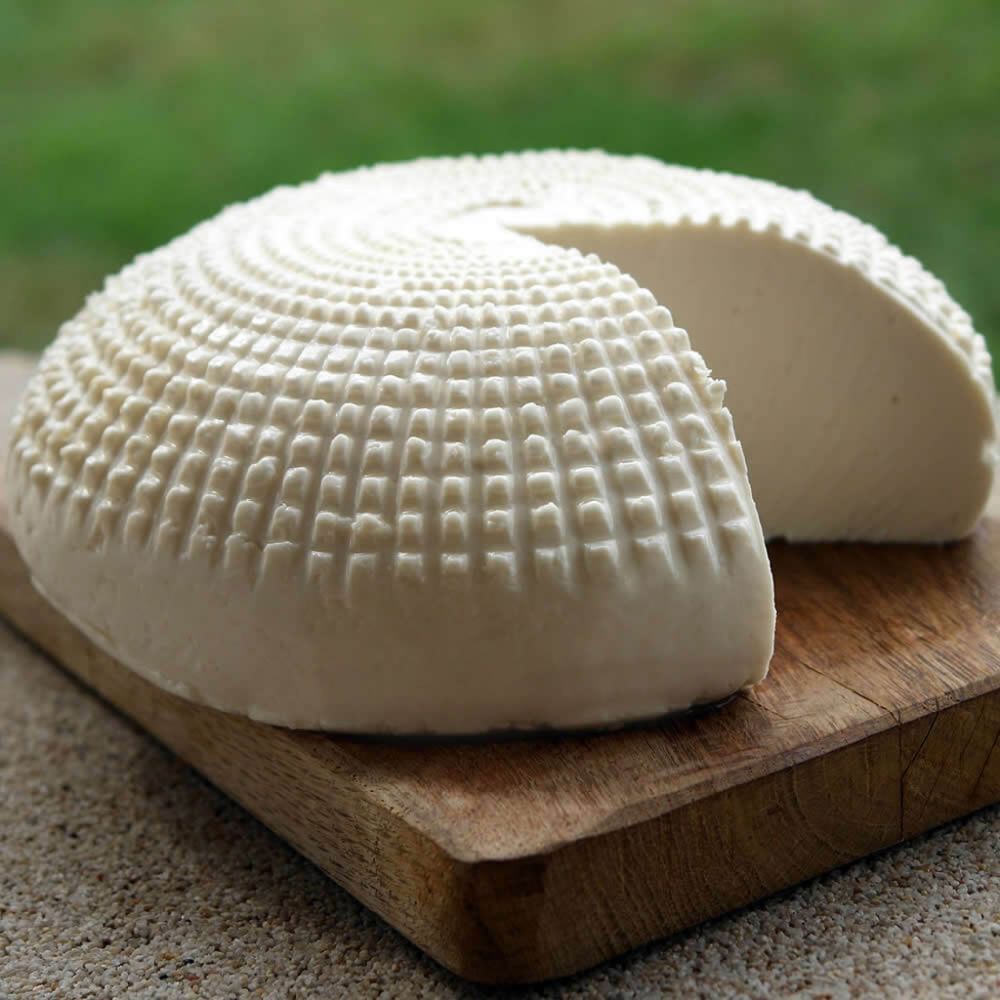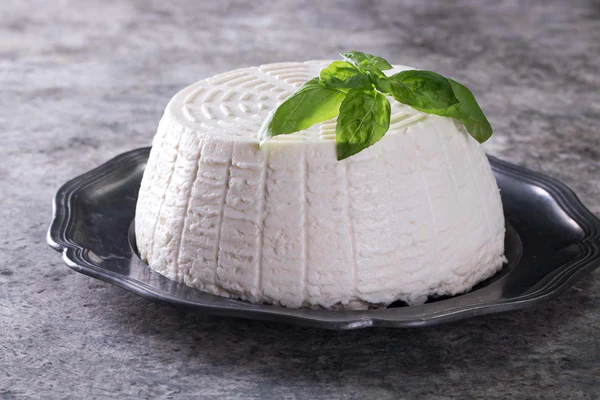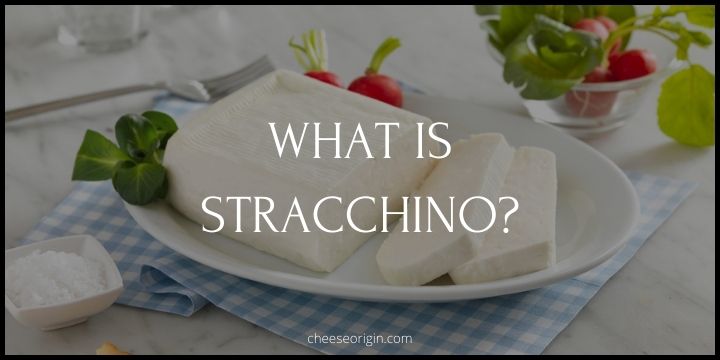What is Basket Cheese? A Mediterranean Delight Wrapped in Tradition

In the vast, delicious universe of cheese, there are some varieties that truly stand out for their uniqueness, and Basket Cheese is one of them. If you’re the kind of gourmand who enjoys venturing beyond the familiar territories of Cheddar and Mozzarella, then this guide is just for you.
Today, we’re going to explore the fascinating world of this lesser-known, but equally delightful cheese. From its humble origins to the intricate process that turns simple milk into a culinary delight, this guide will delve deep into everything you need to know about Basket Cheese.
Whether you’re a seasoned cheese connoisseur or a curious foodie eager to expand your palate, this guide will serve as your roadmap to understanding and appreciating the delicate artistry that is Basket Cheese.
Quick Facts About Basket Cheese
| Quick Facts | Description |
|---|---|
| Origin | Middle East & Mediterranean (Primarily Italy and Greece) |
| Milk Source | Cow’s milk, sometimes goat or sheep’s milk |
| Texture | Semi-soft, crumbly |
| Flavor | Mild, slightly salty |
| Color | White |
| Aging Process | Generally fresh, not aged |
| Uses | Ideal for baking, desserts, salads, or served with fruits |
| Production Process | The curd is drained in a basket, giving the cheese its name and characteristic shape |
What kind of cheese is basket cheese?
The name ‘basket cheese’ is derived from its traditional method of formation where it’s shaped inside a basket, leaving the cheese with a distinct woven pattern on its surface. The taste is mildly salty, soft, and often compared to Mozzarella or a softer version of Feta.
One of the prominent variants of basket cheese is the Turkish sepet peyniri. This fresh curd cheese is native to the Aegean Region and is particularly associated with coastal towns like Karaburun, Çeşme, and Ayvalık. Traditional production methods use baskets made from reeds, known as gova, to shape the cheese, but modern commercial production often employs plastic containers.
Although goat milk is the traditional choice for making sepet peyniri, sheep’s and cow’s milk are also frequently used. In certain areas where sheep’s milk is predominantly used, this cheese is referred to as kelle cheese.
Over in Italy, basket cheese plays a key role in their cuisine too. It is often used in several savory pies, especially those traditionally served during Easter celebrations.
Basket cheese is versatile and can be used in both sweet and savory dishes.
Basket cheese tasting notes
- Basket cheese has a mild, somewhat bland flavor.
- It’s often compared to fresh mozzarella and ricotta in terms of taste.
- The flavor is described as a blend of ricotta, pressed cottage cheese, and very fresh mozzarella.
- The Sicilian version, Canestrato, is described as sweet and delicate with a slight tang when fresh.
- Basket cheese pairs well with tomatoes, basil, pita bread, and water wheel crackers.
- It can also be enjoyed with jam or honey to enhance its mild flavor.
- Its mildness allows it to complement a variety of foods without overpowering other flavors.
What is basket cheese used for?
Basket cheese is incredibly versatile due to its mild flavor and soft texture. It’s traditionally used in a variety of dishes, both sweet and savory. Here are some common uses:
- Easter Celebrations: In many cultures, it’s a staple at Easter celebrations. It can be served plain, with a drizzle of olive oil, or incorporated into traditional Easter recipes.
- Cheese Boards: Its unique shape and texture make it an interesting addition to any cheese board. It pairs well with fresh fruits, nuts, and a variety of crackers.
- Cooking: Basket cheese can be melted into pasta, used as a filling for pastries, or crumbled over salads. It’s also great for sandwiches or pizza.
- Desserts: Because of its mild flavor and creamy texture, it can be used in sweet dishes too. Try it in cheesecakes, or pair it with honey and fresh fruit for a simple and delicious dessert.
The best way to enjoy basket cheese is to experiment with it. Its neutral profile means it can take on a variety of flavors, allowing you to get creative in the kitchen.
Is basket cheese the same as mozzarella?
While Basket Cheese and Mozzarella share some similarities, they are not the same. Both are traditionally made from cow’s milk and have a mild, milky flavor. They are also both categorized as fresh cheeses, meaning they are not aged.
However, there are some key differences:
| Basket Cheese | Mozzarella | |
|---|---|---|
| Origin | Middle East | Italy |
| Milk Type | Cow’s milk | Cow’s milk (sometimes Buffalo milk in traditional mozzarella) |
| Texture | Semi-soft, rubbery and creamy | Slightly firmer, elastic |
| Taste | Mild, slightly salty | Mild, slightly tangy |
| Production Method | Drained and cured in a basket | Pasta filata or stretched-curd method |
| Traditional Use | Used in Middle Eastern cuisines, popular in Easter dishes | Used in Italian dishes, like pizza and caprese salad |
| Pairings | Pairs well with fresh fruits, nuts, honey, crackers, and can be used in sweet or savory dishes | Pairs well with tomatoes, basil, olive oil, and is used in various cooked dishes |
- Texture: Mozzarella has a slightly firmer texture and is more elastic than Basket Cheese. The latter is softer and creamier.
- Taste: While both cheeses are mild in flavor, Mozzarella can have a slightly tangier taste compared to the more neutral flavor of Basket Cheese.
- Production: The process of making these cheeses is different too. Mozzarella is made using a technique called pasta filata or stretched-curd, which gives it its distinctive, stretchy texture. On the other hand, Basket Cheese gets its unique shape from being drained and cured in a basket.
- Usage: Mozzarella is often used in dishes like pizza and caprese salad, while Basket Cheese is traditionally used in Middle Eastern cuisines and is popular in Easter dishes.
While they may seem similar at first glance, Basket Cheese and Mozzarella each have their unique characteristics and uses.
>> Click here to read our in-depth guide on Mozzarella
Is basket cheese and farmers’ cheese the same?
Basket cheese and farmers’ cheese are often confused due to their similar characteristics, but they are not the same. Both are fresh cheeses, meaning they are not aged and have a mild flavor.
However, there are some differences between them:
| Basket Cheese | Farmers’ Cheese | |
|---|---|---|
| Origin | Middle East | Various (common in North America and Europe) |
| Milk Type | Cow’s milk | Cow’s milk, goat’s milk, or sheep’s milk |
| Texture | Semi-soft, rubbery and creamy | Varies from soft to firm |
| Taste | Mild, slightly salty | Mild, slightly tangy |
| Production Method | Drained and cured in a basket | Made by adding an acid to heated milk, then strained and pressed |
| Traditional Use | Used in Middle Eastern cuisines, popular in Easter dishes | Versatile, used in variety of dishes from desserts to main courses |
- Texture: Basket cheese tends to be soft and creamy. On the other hand, farmers’ cheese can vary in texture from soft to firm depending on how long it’s pressed and if it’s made from skim or whole milk.
- Flavor: While both cheeses are relatively mild, farmers’ cheese is often slightly tangier than basket cheese.
- Production Method: Basket cheese gets its name from the way it’s formed. The curds are placed in a basket where the whey drains, leaving the soft cheese. Farmers’ cheese is made by adding an acid like vinegar or lemon juice to heated milk. The curds are then strained and pressed to remove the whey.
- Usage: Basket cheese is commonly used in Middle Eastern cuisine, particularly in Easter dishes. Farmers’ cheese is more versatile and can be used in a variety of dishes, from desserts to main courses.
While both cheeses share some similarities, they each have unique characteristics that make them distinct.
Best basket cheese substitutes
| Substitute | Description |
|---|---|
| Feta Cheese | A tangy and salty cheese that can mimic the mild and slightly salty flavor of basket cheese. |
| Halloumi | A semi-hard, unripened, brined cheese that can be easily grilled or fried. It holds its shape well, similar to basket cheese. |
| Ricotta Salata | An Italian cheese that is pressed, salted and dried. Its salty and milky flavor resembles that of basket cheese. |
| Farmer’s Curd | This is a simple, fresh cheese with a mild flavor, similar to basket cheese. |
| Paneer | A fresh, unaged cheese popular in Indian cuisine. Its mild flavor and firm texture make it a good substitute for basket cheese. |
| Mozzarella | An Italian cheese with a mild flavor and elastic texture. It can be used in both savory and sweet dishes, making it versatile like basket cheese. |
| Greek Feta | Made from sheep or goat milk, Greek Feta is salty and tangy, which can provide a flavor contrast in dishes that call for basket cheese. |
| Gruyère | Although typically used as a melting cheese, its nutty and slightly sweet flavor can work as a substitute for basket cheese in certain dishes. |
| Cotija | A Mexican cheese that is firm and salty. It can be grated or crumbled, offering a different texture option when substituting for basket cheese. |
| Vegan Cheese | For those following a vegan diet, there are numerous vegan cheese options that can mimic the texture and flavor of basket cheese. |
Basket cheese vs. Ricotta
Basket Cheese:

- Basket Cheese is a semi-soft cheese made from cow’s milk.
- It is formed in a basket, which gives it a distinctive pattern.
- The flavor of Basket Cheese is mild, slightly salty, and it has a unique, slightly rubbery texture.
- It is typically served as a table cheese and can be eaten alone or used in cooking.
Ricotta:

- Ricotta is a soft Italian cheese made from the whey left over from the production of other cheeses.
- It has a creamy texture and a sweet, milky flavor.
- Ricotta is often used in Italian desserts like cannoli or in dishes like lasagna.
- Unlike Basket Cheese, Ricotta is not typically eaten on its own but is usually used as an ingredient in cooking or baking.
While both cheeses have their origins in Italy and are used in cooking, Basket Cheese is more of a standalone product, whereas Ricotta is typically used as an ingredient.
Their flavors and textures are also quite different, with Basket Cheese being more rubbery and mild, and Ricotta being creamy and sweet.
>> Click here to read our in-depth guide on Ricotta
Is basket cheese healthy?
Basket cheese can be considered part of a healthy diet when consumed in moderation. Like many cheeses, it provides several nutritional benefits:
- Protein: Basket cheese contains about 5g of protein per serving, which is essential for muscle growth and repair.
- Calcium: Cheese is known to be a good source of calcium, which is important for bone health.
- Vitamins and Minerals: Basket cheese can potentially help with minor health problems like muscle weakness, numbness, and fatigue, which may indicate it contains certain beneficial vitamins and minerals.
However, also keep in mind that basket cheese, like many dairy products, can be high in fat and cholesterol. For instance, one serving of basket cheese contains 7g of fat and can contain substantial amounts of cholesterol.
Hence, it’s advisable to consume it in moderation, particularly for individuals who are managing their weight or have high cholesterol.
Basket cheese nutrition facts
| Nutrition Facts | Serving Size of 1 oz (28.35g) |
|---|---|
| Calories | 80-90 |
| Calories from Fat | 54 (67.5%) |
| Total Fat | 7g |
| Trans Fat | 0g |
| Carbohydrates | 1g |
| Protein | 5g |
What goes well with basket cheese?
Food that goes well with basket cheese
| Category | Food |
|---|---|
| Fruits | Citrus fruits, Pears, Cantaloupe |
| Vegetables | Roasted Tomatoes, Various vegetables in Italian Easter pies |
| Herbs and Spices | Basil, Garlic |
| Bread and Grains | Crackers, Good Bread, Toast |
| Meats | Ham, Sausages, Prosciutto |
| Other Cheese | Mozzarella, Swiss Cheese, Ricotta Salata, Greek Feta, Goat Cheese, Cream Cheese, Brick Cheese |
| Sweeteners | Honey, Jams |
Also read: What Fruit Goes on a Charcuterie Board?
Beverage that goes well with basket cheese
| Category | Beverage |
|---|---|
| Wines | Pinot Noir, Pinot Gris, Sauvignon Blanc, Red Port, Tawny Port, Sauternes, Sherry |
| Spirits | Dark Rum, Bourbon, Rye Whiskey, Gin, Whisky, Vodka |
Also read: Best Wine and Cheese Pairings: The Ultimate Guide
The history of basket cheese
Basket cheese has its roots in the Mediterranean region. This cheese is traditionally formed inside a basket, which is how it got its name. The basket leaves an elegant wicker-textured pattern on the cheese, adding to its unique appeal.
Basket cheese is an Arabic-style semi-soft cheese made from vegetable rennet and pasteurized cow milk. It’s similar to Italian fresh cheese, having characteristics reminiscent of both ricotta and mozzarella.
One notable example of this tradition is the Lamagna Cheese Co., where basket cheese has been an Easter tradition for over 85 years. Italians often enjoy this lightly salted, fresh, unripened cow’s milk cheese during Easter.
Another variant of this cheese type is Canestrato, an Italian basket cheese that dates back to at least the 10th century. It’s one of several types of cheese made in Sicily.
Basket making, the process used to shape these cheeses, has long-standing traditions in many cultures. For instance, the Shakers, a religious group that originated in the 18th century, started weaving baskets quite early in their history.
Frequently Asked Questions
1. Is basket cheese salty?
Basket cheese is typically described as having a mild and slightly salty flavor, but not overwhelmingly so.
The saltiness can depend on the specific brand or recipe used to make the cheese. It’s always recommended to taste the cheese before using it in a recipe to adjust your seasoning accordingly.
2. Can I freeze basket cheese?
Yes, you can freeze basket cheese. Freezing can extend the shelf life of many types of cheese, including basket cheese. However, it’s important to note that freezing can alter the texture of the cheese, making it more crumbly once thawed.
To freeze basket cheese, wrap it tightly in plastic wrap or aluminum foil, then place it in a freezer bag. Try to remove as much air as possible from the bag before sealing it. This method will protect the cheese from freezer burn.
When you’re ready to use the cheese, let it thaw in the refrigerator for 24 to 48 hours. It’s best to use thawed cheese within a few days for the best quality.
3. How to properly store basket cheese?
Proper storage of basket cheese can help extend its freshness and prevent spoilage. Here are some tips:
- Refrigerate it: Always store your basket cheese in the refrigerator. The ideal temperature for storing cheese is between 35°F and 45°F.
- Wrap it properly: After each use, wrap the cheese in wax paper or parchment paper first, then loosely in plastic wrap or a plastic bag. This allows the cheese to breathe while still maintaining enough humidity to prevent it from drying out.
- Avoid cross-contamination: Store your basket cheese separately from other strong-smelling foods. Cheese can absorb other flavors, so it’s best to keep it away from items like onions or garlic.
- Use within two weeks: For the best flavor and quality, consume basket cheese within one to two weeks of opening.
The best way to enjoy basket cheese is when it’s fresh. So try to only buy as much as you can consume within a reasonable timeframe.
4. Is basket cheese made from pasteurised milk?
Yes, basket cheese is typically pasteurized. The cheese is typically made from pasteurized whole milk, rennet, and salt. Rennet is an enzyme that plays a crucial role in separating milk into solid curds and liquid whey, a process fundamental to cheese-making.
Also read:
- Discovering Panela: A Guide to Mexico’s Versatile Cheese
- All About Swiss Cheese: A Comprehensive Guide
- The Tale of Taleggio: Unveiling Italy’s Pungent Treasure
- Cotswold Cheese: A Taste of England’s Finest
- The Ultimate Guide to Hoop Cheese: A Southern Delight
- The Ultimate Guide to Chèvre: Exploring Goat Cheese
- Fior di Latte: A Comprehensive Guide to Italy’s Creamy Delight





